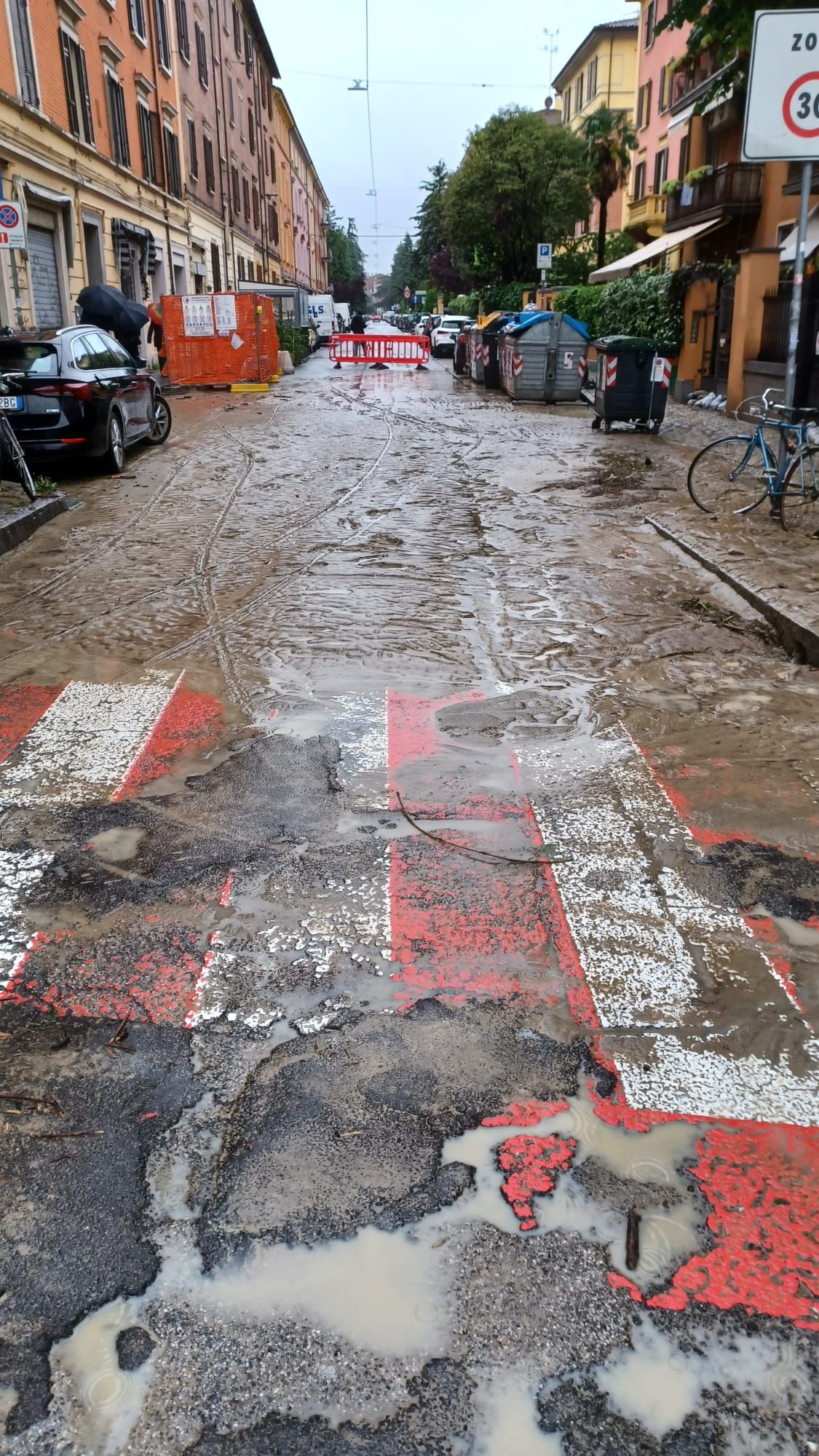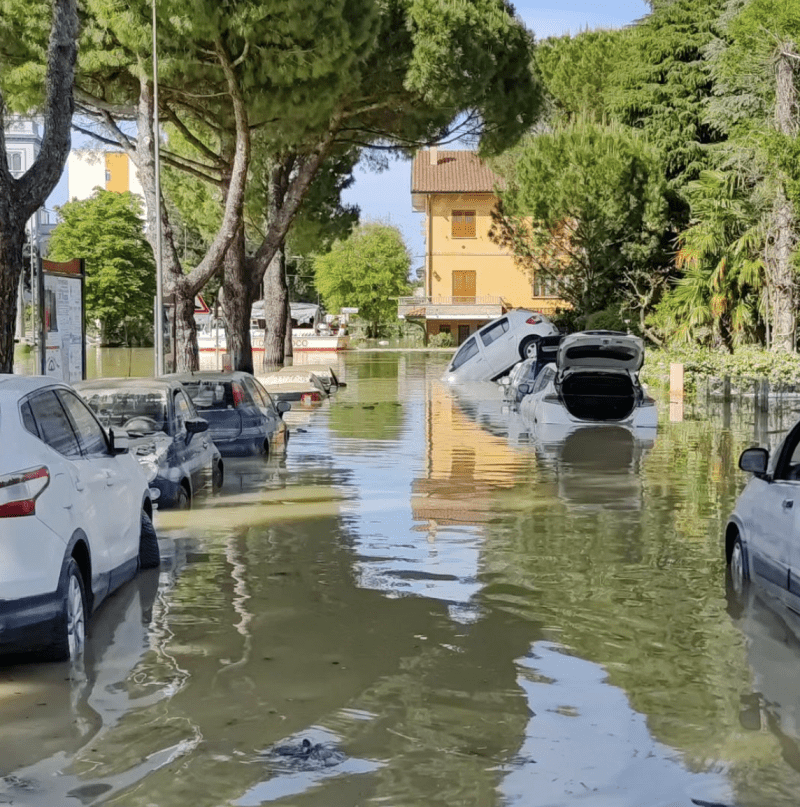Emilia-Romagna and parts of Le Marche have been submerged in devastating floods over the past week. Highways are now rivers, fields of crops are lakes and many have been trapped in their homes. The areas around Faenza, Ravenna and Cesena have been hit the hardest, while Bologna and cities along the coast like Rimini and Riccione have also been affected.
After a year of historic drought, the flooding is yet another example of extreme weather striking Italy. Such events are becoming increasingly common in a country that is also relatively under-equipped to reckon with the often tragic consequences.
Here’s what’s going on in the region known for its pasta, luxury cars and medieval villages — and a look at the bigger picture.
“In 36 hours, six months’ worth of water”
Drone footage in the center of Faenza / Produced by La Repubblica
Rescue efforts continue as waters begin to recede in some areas, and so far 14 have been found dead. Twenty-three rivers burst their banks and more than 10,000 people have been evacuated from their homes. The heavy rains have also caused landslides in the nearby Apennines, more than 280 according to the region. Coldiretti, the Italian Farmers Association, reported more than 5,000 farms affected by the flooding.
The first floods hit on May 2 and 3 and then a second wave began on May 16, which is still ongoing — an exceptional combination of events.
Stefano Bonaccini, President of the Emilia-Romagna region, said billions of euro in investment will be necessary to recover from the tragedy.
“In 36 hours, six months’ worth of water fell onto the same ground that just two weeks ago endured [another] four months’ worth of water,” Bonaccini told SkyTG 24.
On her way to the G7 in Hiroshima, Prime Minister Giorgia Meloni spoke with the Civil Defense, confirming her availability to convene the Council of Ministers to approve emergency measures.
“The government is here and standing beside all the people affected and local institutions,” Meloni said.
Meanwhile, others couldn’t help but point out that the country’s preventive measures are still lacking, even as institutional awareness of the risks has been growing.
“This country has not yet faced the reality of its fragility from a hydrogeological and seismic point of view. In recent months there has been talk of changes to the PNRR (National Recovery and Resilience Plan). It would make sense to apply resources to prevention and securing the territory,” said Elly Schlein, the new leader of the Democratic Party.
According to a 2021 report from ISPRA, the government’s environmental agency, the region where the most people were at risk of severe floods was in Emilia-Romagna.
A year of historic weather events
The region, like the rest of Italy, had been contending with the effects of more than a year of a severe lack of rainfall.
The flooding is just the latest instance of extreme weather that’s becoming increasingly common. In July 2022, an avalanche on the Marmolada in Trentino claimed 11 victims. In the following November, a tragic landslide on the island of Ischia took the lives of 12 people. The number of extreme events that cause damage, from heavy rain and hail to tornados, increases every year. According to the Società Italiana di Medicina Ambientale (Italian Society of Environmental Medicine), there were more than 130 events recorded in 2022, the highest annual average of the past decade.
These events are exacerbated by Italy’s outdated and poorly adapted construction practices and infrastructure, as evidenced by past tragedies like the earthquake that hit the same region this very week 11 years ago, as well as perpetually stagnant bureaucracy that halts action and mismanages funds.
The solution, however, is complicated, said Fabio Sai, head engineer for an interregional agency in charge of managing and surveilling the Po River Basin. His agency is currently on high alert as it monitors the conditions of the Po, which has been less affected than tributaries in the Emilia-Romagna region.
“Change is not easy,” Sai said. “The embankments of these rivers are very close to the [rivers themselves]. If you wanted to move them, you would have to shift them into the countryside where there are farms, homes, villages.”
In many cases, authorities are dealing with infrastructure that was built over 50 years ago, and in that time, Italy has grown exponentially. “It’s difficult to make these decisions today,” Sai added.
When rain only pours

Predictions of another historically sweltering summer and the looming El Niño made the first rain of spring a welcome sight. But flooding complicates things. It won’t necessarily mitigate the drought’s persistence.
The Po Basin authority has said the Po River has recovered its water levels and is promising a more optimistic outlook on the water crisis. But it’s early to make sweeping statements. To ensure water security, the country needs consistent rain over a longer period of time to restore the deeper water reserves.
Drought-ridden soil and flash floods are an equation that won’t solve the problem in the short-term. Downpours tend to course right over the dry land instead of fully quenching it, said Sai.
As for whether the rain we are seeing this spring is enough to end the drought, glaciologist Antonella Senese points to the mountains. Glaciers and snow accumulation serve as essential long-term water storage.
The rain of recent months might bring temporary relief, but the hope of a definitive end to the drought disappeared with the colder months. Rainy season in Italy is actually in autumn. Spring showers means there is less time for the water to replenish those crucial groundwater reserves before evaporating with the summer heat.
How to help
If you wish to help those affected by the flood, you can donate directly to the Region of Emilia-Romagna via bank transfer, being sure to indicate the motive for your donation.
IBAN: IT69G0200802435000104428964
Causale (Payment description): “ALLUVIONE EMILIA-ROMAGNA”
BIC / Swift code: UNCRITM1OM0
Account holder: Agenzia per la sicurezza territoriale e la protezione civile dell’Emilia-Romagna (Emilia-Romagna Territorial Safety Agency and Civil Protection Service)






